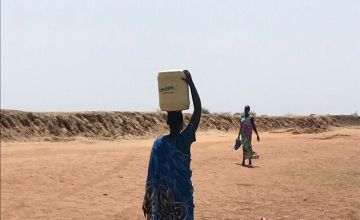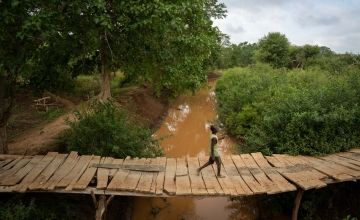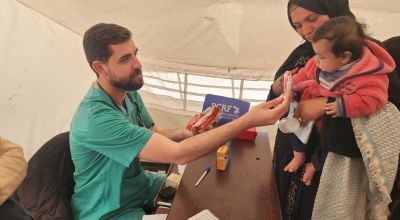
Knowledge Hub
When we think of a drought, images of dry and fractured land comes to mind - a dry, desert-like landscape with no rainfall. While we can imagine that finding water would pose a challenge what are some of the wider reaching impacts of a drought?
Water for life
We all know that water is important for our health – but why? Past the point of having a dry mouth, feeling thirsty, light-headed and tired, serious health problems can be caused through dehydration, from kidney failure to seizures, water keeps our bodily processes working. Children are particularly at risk of dehydration as they have a lower body weight so are more sensitive to small amounts of fluid loss.
Drought is a prolonged period of abnormally low rainfall, leading to a shortage of water meaning that people are left short of this life-saving essential.
Food
In higher-income countries, we import a large majority of our food – In 2020, the UK imported 46 per cent of the food it consumed. But in lower-income countries many families rely on the food they grow themselves, or buy locally. Drought not only means that people struggle to get the water they need, but that crops do too.
Many of the communities we work with are pastoralists who rely on livestock as food. When drought occurs, livestock also suffers the loss of water. Pastoralists in Northern Kenya alone have lost over 2.6 million livestock to the drought, leaving people without meat for food, in addition to no milk – an essential that many parents rely on to feed their children.
Conflict
Sadly, many pastoralists are forced to leave their homes to find pasture and water sources for their livestock. Most often this will be the men of the households, leaving women and children and older people at home with depleted water and food supplies, but sometimes whole families will leave their home to trek for long distances, sometimes days and weeks, to find the resources they need to survive.
Many pastoralists needing the same scarce resources can lead to inter-communal tensions and conflict. Rising food and livestock prices also fuel conflict, and recent clashes between nomadic pastoralists in drought-affected areas highlight the vicious cycle of escalating violence and food insecurity.

Protection risks
As mentioned above, oftentimes women, children and older people are left behind while men in communities search for much needed pasture and water. This leads to heighted protection risks and school dropouts. Food prices are also often driven up as there is a shortage, making it inaccessible for displaced populations.
When water runs low, people – most often women and girls – are forced to make long journeys to available water points. More than 2 billion people around the world are without clean water at home. For many, the closest source of water that’s safe for cooking, drinking, and hygiene is at least 30 minutes’ away by foot. During periods of drought this can hugely increase and remote locations, in addition to long journey times and long waits at water points, increases the risk of gender-based violence such as rape, as well as wild animal attacks.

Flooding
When rains finally arrive, you would think that communities could breathe a sigh of relief but the humanitarian crisis is often far from over.
Heavy rains can cause flash flooding and the hard, dry land caused by droughts means that the ground cannot absorb water causing a whole new disaster. Floods can destroy crops and homes, and pose a serious risk to health, life and livestock.

How is Concern helping?
Concern addresses the impacts of drought in a number of different ways.
- Truck in emergency water to water vulnerable communities.
- Provide life-saving food to the parents of malnourished children.
- Transfer cash to families so they can buy what they most need.
- Provide vital medical equipment to specialist teams to treat malnutrition.
- Work with communities on climate-smart farming solutions and provide seeds, tools and training.
- Advocating for greater action on climate change and commitments on climate funding from high-income countries.

Other ways to help
Donate now
Give a one-off, or a monthly, donation today.
Join an event
From mountain trekking to marathon running, join us for one of our many exciting outdoor events!
Buy a gift
With an extensive range of alternative gifts, we have something to suit everybody.
Leave a gift in your will
Leave the world a better place with a life-changing legacy.
Become a corporate supporter
We partner with a range of organisations that share our passion and the results have been fantastic.
Create your own fundraising event
Raise money for Concern by organising your own charity fundraising event.





